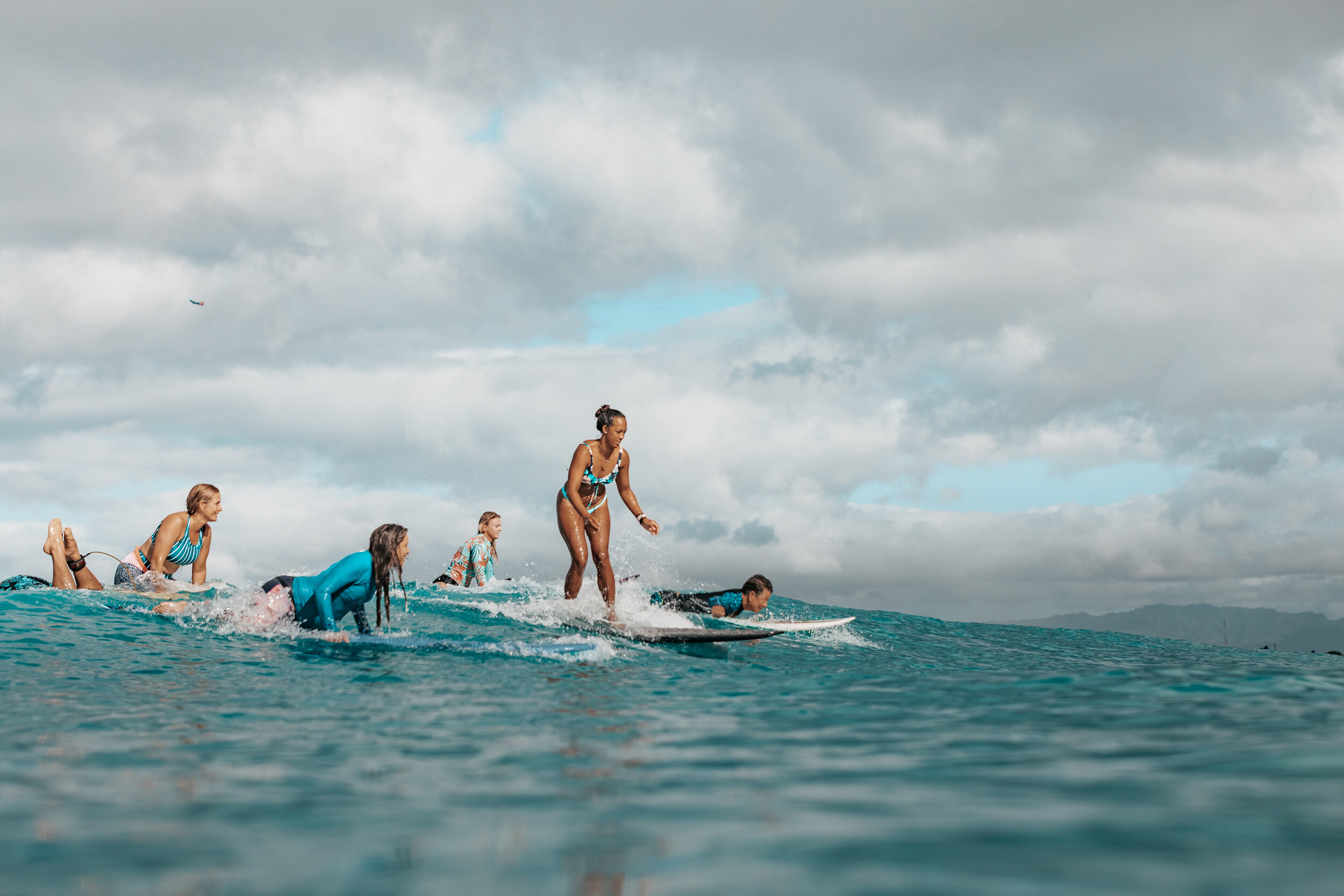
A Brief History of Surfing
A Legacy
Archeological evidence shows that surfing developed independently in coastal communities around the world. From Africa to South America, and all the ocean in between, people surfed. The first known artifact comes from the Viru culture in Peru. Their pottery, dated 1000 BC, depicts wave riding. The first written account of surfing comes from the 1640’s in what is now Ghana. Coastal West Africa had a long tradition of surfing and canoe-surfing. Hawaiʻi has perhaps the greatest number of oral and written accounts, but people in many parts of the world surfed long before anyone wrote about it. Missionaries in Hawaiʻi banned surfing, but renegades like Princesses Kaiʻulani helped keep it alive by riding her wooden olo board through history. The large number of oral and written records from Hawaiʻi make it modern surf culture’s spiritual home. We owe surfing today to our many seafaring ancestors who left us this legacy. We honour our known and unknown history, and the Hawaiian Islands where our group first started surfing together.
Chants and songs tell of the Kings and Queens of old Hawaiʻi who surfed. These oral histories trace surfing in the islands to the fourth century. During Makahiki season -- the time of rest and play (and prime winter waves) -- wave riding, or Heʻe Nalu, took over. Kings, queens, commoners, and children all surfed. Only royalty, however, could surf at the best spots such as “Queens,” the Waikiki Break named for its exclusivity. King Kamehameha describes the places he would surf with his favorite wife, Kaʻahumanu. Hawaiian myths and legends tell of gods and goddesses surfing and guiding the winds, tides, and waves.
The kahuna (priest) would aid surfers in the spiritual ceremony of choosing and building a wooden surfboard from the koa, ulu, or wiliwili trees. Offerings were made and craftsmen selected. Surfers could call on the gods Lono and Laʻamaomao to create surf and grant them safe passage. One legend tells of the great surfing Princess Kelea of Maui who suffered hōpūpū, or surf fever, from going too long without riding waves. The goddesses Pele and Hiʻiaka surfed. Surfing played a role in health, religion, and romance. We surf in the wake of these gods and goddesses’ surfing legacy.
The arrival of European explorers meant that by 1840, at least 84% of the Native Hawaiian population had died from infectious diseases. Missionaries banned surfing as a leisurely and lascivious pastime. Missionaries also banned surfing in West Africa and South America. By the early 1900’s, surfing had almost completely disappeared from the Hawaiian islands and from many coastal communities around the world.
“She remembered that play is more important than productivity.”
The Kings and Queens of Hawaiʻi had minimal time for surfing as protestantism, plantation life, and a cash economy took over. Princess Victoria Kaʻiulani was “an expert surfrider” whose wave riding pushed back at colonization and protestantism. She surfed a wooden olo board reserved for royalty. She remembered that play is more important than productivity. We surf in the wake of Princess Kaʻiulani’s surfing legacy.
Surfing in Waikiki briefly revived again, against missionary influence, in the late 1800’s when it became a tourist destination. Visitors saw surfing as a novelty sport. In 1885, three Native Hawaiian princes -- David Kawananakoa, Edward Keliʻiahonui and Jonah Kūhiō Kalaniana'ole -- surfed the mouth of the San Lorenzo River in Santa Cruz, California on custom shaped redwood boards. Their daring act brought surfing to Santa Cruz. We surf in the wake of these three princes' surfing legacy.
The legendary Duke Kahanamoku brought surfing to the world. The son of a prominent family, Duke grew up on the outskirts of Waikiki. He became a 5-time Olympic Gold Medal swimming champion. In his free time, he surfed a 16 foot koa board that weighed 114 pounds. In 1914, he travelled to Sydney, Australia to give a surfing exhibition. These surfing and swimming exhibitions earned him the title of “Ambassador of Aloha.” In 1912, he lived in Southern California and popularized surfing from Huntington Beach to San Francisco. He also starred in over 14 Hollywood movies. We surf in the wake of Duke Kahanamoku’s surfing legacy.
The Duke Kahanamoku International Surfing Championship at Sunset beach was the first major invitational-only surfing competition. It's now called the Billabong Pro, reflecting the commercial turn surfing took with sponsors and prize money. Pushing back at the commercialization and white-washing of surf culture, it's important to honor and democratize surfing’s legacy.
Surfing Moms currently meet on Kanaka Maoli lands at Koʻolau Poko (Windward side) and Ala Moana (meaning path to the sea). Mahalo to all the queens, goddesses, and commoners from West Africa to Peru to Polynesia who empower us to leave a surfing legacy for our own children. And, of course, to our great Pacific Ocean mother Te Moana Nui o Kiwa for looking after us daily.
If you want to know more, check out this excellent article entitled “The History of Female Surfing: A Legacy of Hawaiian Medicine Women, Royalty, Goddesses, and More.”
We also think this is a great video by Scott Laderman that talks about the complicated history of surfing.

